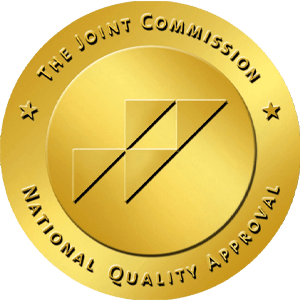Today’s technology devices ensure that we never have to spend a moment fully immersed in reality, causing quite a concern. Treatment for tech addiction goes far and beyond the use of screens, and includes an unhealthy emotional connection to the internet. Addiction to technology is a relatively new phenomenon, but it is one of the fastest growing addictions that we have ever seen. In fact, the average person in the United States spends approximately 10 hours and 39 minutes on technology devices each day. Staggering, considering that technology has only been around for the last 30 years. Technology Addiction is an umbrella term that includes addictive behavior towards video gaming, social media, texting, gambling, cybersex and online porn, eBay and other online auctioning or shopping platforms, as well the general overuse of smartphones. And while technology has brought amazing advances in medicine and communication, its full spectrum effects are only now just being understood. For those struggling with overuse, tech addiction treatments: the rise of digital detox programs for tech addicts is in growing need. Omega Recovery, located in Austin TX, is at the forefront and ready for anyone seeking a successful digital detox.
Reasons Why Someone Addicted To Tech Should Consider A Digital Detox
A digital detox is a set period of time where someone, whether struggling with tech addiction or not, intentionally reduces or abstains from using digital devices and technology. Or in other words, taking a much needed break from distractive tech such as smartphones, computers, tablets, and social media platforms. The goal of a digital detox is to both physically and mentally break free from screen time and constant connectivity to tech devices. The aim of partaking on such an endeavor is to improve one’s mental health and well-being by reducing stress, enhancing focus, and regaining a sense of balance in life. While technology has no doubt some benefits to offer humanity, we are learning to utilize a balance system with its use. Let’s take a look at some of the positive effects that tech addiction treatments in Austin, such as a digital detox, can have on a person’s life.
Less Mental Stress: Studies have now shown how overuse of technology can contribute to stress, anxiety, and even depressive symptoms. This was especially looked at after the Covid19 Pandemic period, when the rise in depression and other mental health disorders skyrocketed. Whether it be social media notification dopamine hits, gaming love affairs, or cyber shenanigans- unchecked tech can wreak havoc on mental health. Utilizing tech addiction treatments: the rise of digital detox programs for tech addicts can help a person reconnect with themselves and the important relationships in their life. Thus, creating less mental stress and reconnection with the real world around them.
Improved Focus And Concentration: It comes as no surprise that prolonged screen time can lead to mental fatigue, making it even harder to concentrate. That’s why understanding tech addiction treatments: the rise of digital detox programs for tech addicts is necessary. Taking breaks allows the brain to rest and recharge. In fact, the Default Mode Network (DMN) of the brain becomes active during breaks, allowing for consolidation of information and a refreshed state when returning to a focus needed task. Ironically, stepping away from screens allows the brain to rest and recharge, leading to better focus and concentration.
Improved Physical Health: Prolonged and excessive digital device use can come with physical health complications that most don’t even realize they are creating until it’s too late. Ailments such as eye strain, poor posture, neck pain, obesity, and sleep disturbances can all be caused by tech addiction. A digital detox can address issues like those outlined above because it brings a person to their feet, to a more active world that requires physical activity. Instead of sitting or standing for hours with eyes glued to a screen, the body is up and moving.
Stronger Personal Relationships: Tech addiction can be a major distraction from important personal relationships in a struggling individual’s life. Being human, the support and care needed from other humans in our life is critical. When tech devices provide and receive more attention than the people in a person’s life, a distance is formed. Doing a digital detox or at least spending less time on devices can free up time and attention for meaningful interactions with friends, family, and loved ones. This will not only strengthen relationships, but provide support during a transition time of lower device use.
Better State Of Well-Being: Thanks to a digital detox, the side effects of improved focus, concentration and physical health, along with stronger personal relationships, will all lead to a better state of well being. Reducing digital distractions can no doubt lead to increased happiness and life satisfaction for anyone struggling with staying offline. This greater sense of happiness will come from an internal source instead of a screen, making the motivation to keep a healthy balance of tech ongoing.
Stopping Tech Addiction From Getting Worse: Taking a much needed break from tech can help prevent or manage addiction and the potential for negative consequences associated with excessive screen time and tech use. Taking a break can stop addiction in its tracks from worsening, making recovery that much more attainable. Understanding tech addiction treatments: the rise of digital detox programs for tech addicts is the next best step.
Just as with other kinds of addiction, the detoxification period can be difficult and should be done with professional support on standby. The duration of a digital detox is flexible and depends on individual needs and goals, but a good starting point is 3 days or a weekend. Some people find a week to be a more effective period for breaking digital habits, while others may benefit from longer breaks such as a 30 day minimum. The key to a successful digital detox is to find a timeframe that allows the addicted person to experience the benefits of a break from screens. Improved sleep, more energy, and having a better state of mind and clarity can provide a renewed perspective on just how much digital habits played a role in one’s life.

Steps Someone Can Take While Seeking Tech Addiction Treatments
Once a person realizes how much of an unhealthy relationship they have with their tech, the next best step they can take is literally taking a break. There are small things that someone can start and do while actively seeking the support they need for their tech addiction. Understanding tech addiction treatments: the rise of digital detox programs for tech addicts can be a lot to swallow for someone struggling. Therefore, starting with small and easy steps in taking a break from tech is recommended as soon as possible. Below, are some great suggestions to consider in gradually breaking addiction from technology and all of its enticing devices.
Gradual Approach: Starting small with gradual changes is the best approach when breaking free from the unhealthy habits associated with tech addiction. Small changes that gradually increase over the duration of time can calm the intensity that can happen during detoxification. Staying mindful of what is working and what is not is key, as changes can be made anytime. Setting clear boundaries and goals aids in finding the best general approach for lessening tech use. Determine how much time you want to reduce or eliminate digital use and be realistic about your goals.
Designate Tech Time: Technology use has become part of every day life and oftentimes, needed for fulfilling obligations. However, how we organize, plan, and limit our time spent with tech can make a huge impact on lessening addiction. Designating certain areas or times in the day when one can use tech and/or digital devices is a great start. Whether it be tapered down gradually, or just set until tech addiction treatments start. This is especially important as we take a look at the rise of digital detox programs for tech addicts.
Turn Off Notifications: Something as simple as silencing notifications on all of one’s devices can give the brain a much needed break. Disabling or silencing all notifications for a set part of the day, if possible, is a great way to minimize distractions and reduce the urge to constantly check tech devices. Social media, in particular, can be overwhelming in distracting communications, as they are programmed to do so. The endless beeps, whistle, and ding-a-lings are more distracting and addicting than most of us realize.
Take A Social Media Break: Logging out and/or uninstalling apps is another great way to disconnect from habits that have potentially become distracting and addictive. Applications are designed to keep users engaged for as long as possible, the more you watch the more you seek and buy. However, this type of programming is exactly the kind anyone struggling with tech addiction does not need. These alternate reality platforms can be devastating when taken away or lost, proving how strong tech addiction has become. Social media platforms also worsen mental health, as studies are now showing, particularly in children and young adults. Something to consider when looking into tech addiction treatments: the rise of digital detox for tech addicts.
Create Tech-Free Zones: Sometimes it is the environment of which we live and work that can instigate overuse of tech. Creating tech-free zones is essential in breaking free from unhealthy habits that tend to strengthen addiction. Places such as the bedroom, kitchen, family room, and even the workplace are great places to keep as tech-free zones. Sleep is often negatively impacted by tech, therefore, keeping distracting tech addiction devices out of the bedroom is the one of the best places to start. The workplace is another place to keep tech-free as many times overuse of tech can interfere with work ethic, focus, and performance.
Plan Tech-Free Activities: Take the time to schedule activities once enjoyed, especially with other people. Activities such as reading, dancing, exercising, spending time in nature, forgotten hobbies, or even just coffee dates with friends or loved ones. Keeping busy away from tech is one of the healthiest distractions for someone awaiting a digital detox. Researching tech addiction treatments: the rise of digital detox programs for tech addicts is another activity that someone can partake in!
Reflect And Reassess: When the steps outlined above are taken it is absolutely necessary to take the time to reflect on how life felt and what was learned. Which actions or steps taken worked best? Which actions or steps were the most difficult to do? Which relationships improved, if at all, and why? Being mindful in the actions we take and how we feel afterward is crucial in understanding our own habits and addiction. Taking the time to reflect and reassess is also necessary to successfully adjust approaches accordingly for future detoxes.
Omega Recovery Offers The Best Tech Addiction Treatments: The Rise Of Digital Detox Programs For Tech Addicts
Dr. Nicholas Kardaras, one of the country’s foremost experts on tech addiction and the author of the best-selling book “Glow Kids”, has founded one of the best facilities available in treating tech addiction. Developing a comprehensive and immersive 8-week program designed to not only treat the tech addiction, but to also address any and all underlying issues that may be contributing to the tech addiction. At Omega Recovery, Dr. Kardaras’s unique program understands tech addiction treatments: the rise of digital detox programs for tech addicts. We provide a digital detox period that enables the real work of self-discovery that needs to happen. One that ensures long-term recovery can and will occur. We meaningfully engage our tech addicted clients and connect them to caring, well-trained masters-level therapists trained by Dr. Kardaras and certified by the NIDHW (National Institute for Digital Health and Wellness). Clients begin to do the underlying psychodynamic work so that they can build a stronger and more empowered sense of their own identity. One without the counterfeit reality of their digital escapism. Our holistic, nationally-recognized and accredited program is here to provide tech addiction clients with the best evidence-based care. Regardless of which stage of recovery the client is in, we are here every step of the way. Whether you’re seeking help for yourself or a loved one struggling with tech addiction – we can help, starting today. For more information, visit our website https://omegarecovery.org/ or call us at (512) 601-5407.




